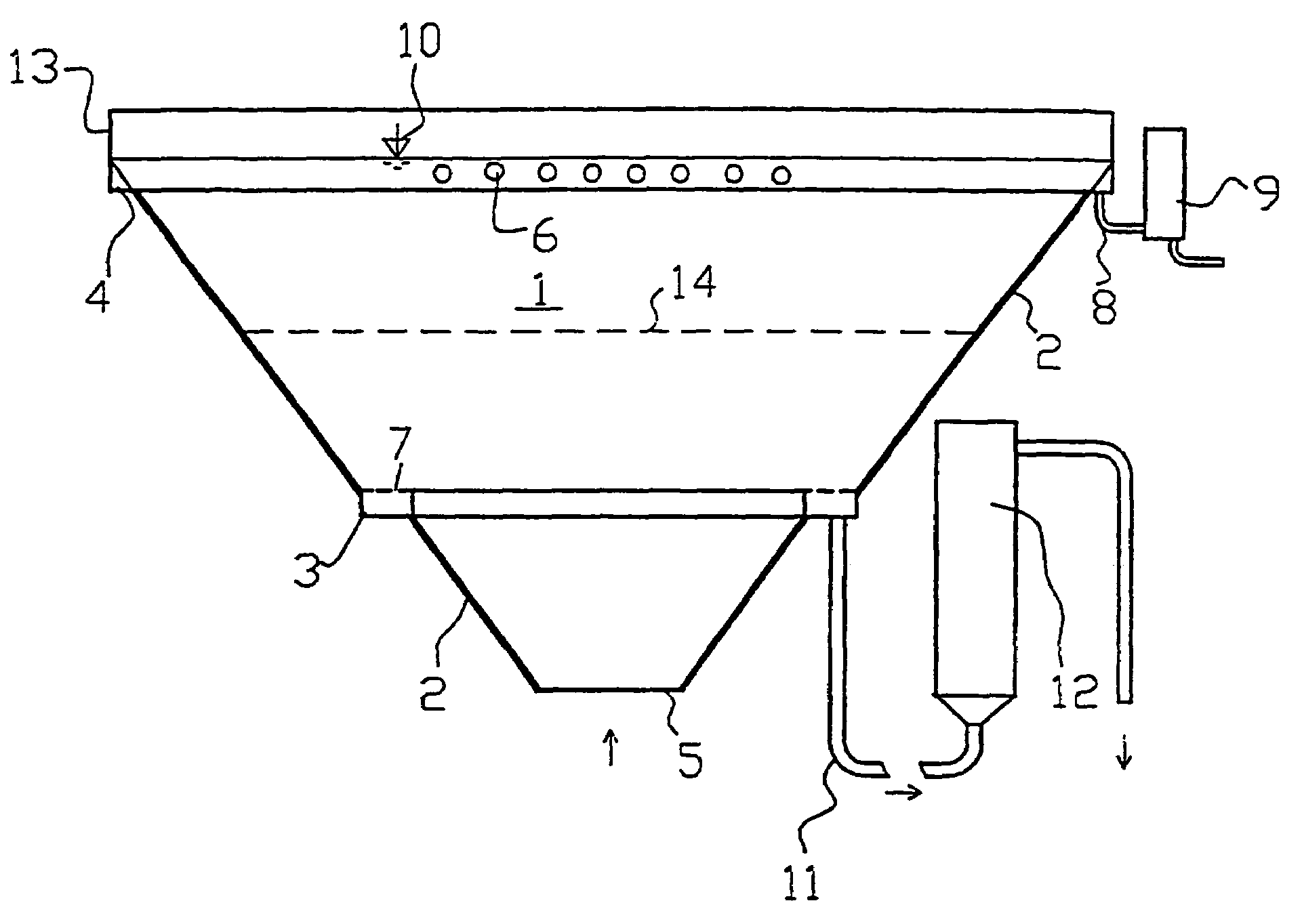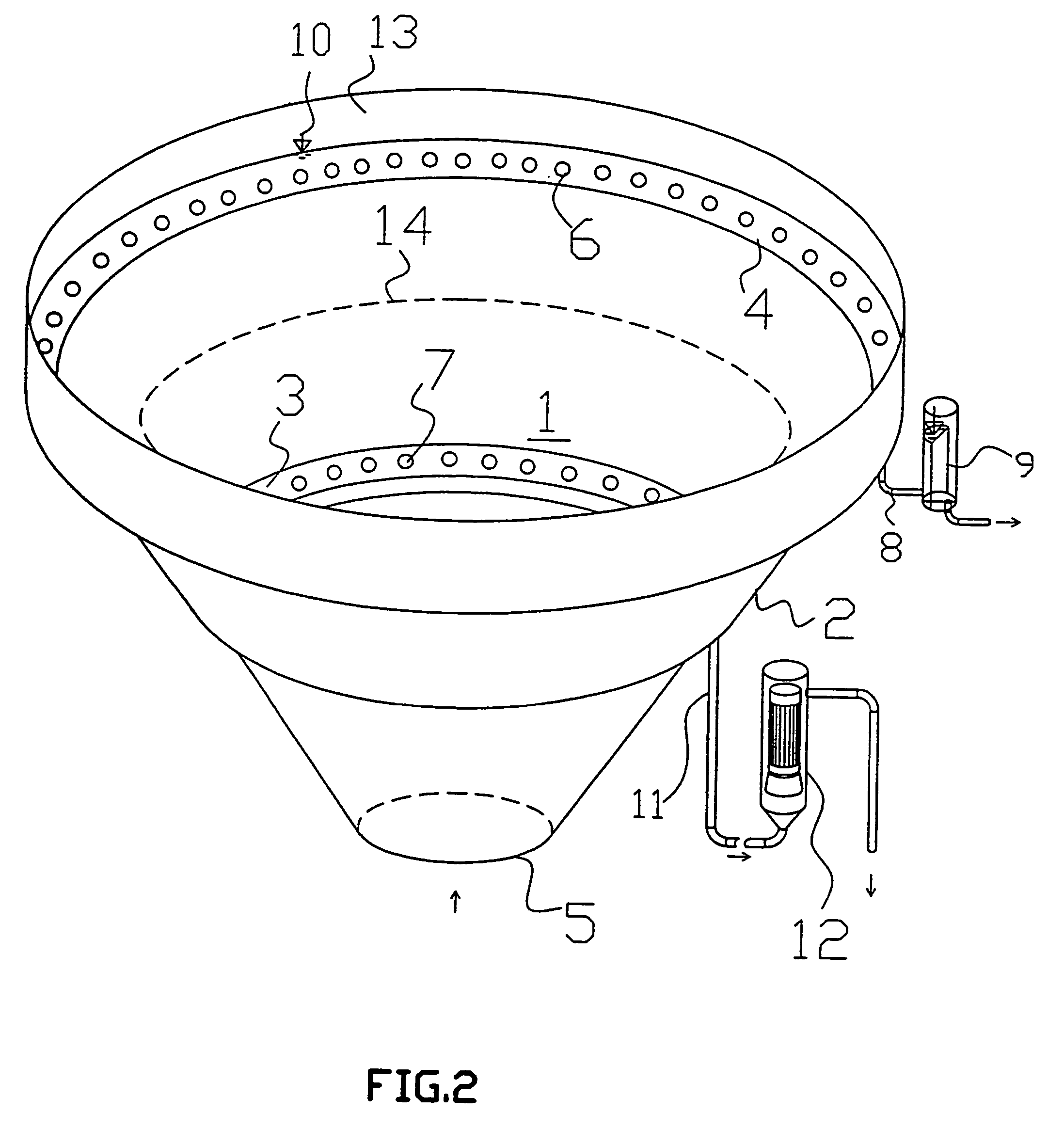Method of separating suspension, in particular for waste water treatment
a technology of suspension and waste water treatment, applied in the direction of sedimentation settling tank, separation process, filtration separation, etc., can solve the problems of failure to fluidize, complex solutions, and tendency to get wors
- Summary
- Abstract
- Description
- Claims
- Application Information
AI Technical Summary
Benefits of technology
Problems solved by technology
Method used
Image
Examples
example 1
[0044]The basic part of the apparatus for the separation of flocculating suspension according to this invention is separator 1 in form of an upwards widening cone limited by outer wall 2 in shape of a conical casing (FIGS. 1, 2). The shape of the cone of separator 1 can be also non-continuous in the sense that it may comprise not illustrated short cylindrical parts, or even tapered parts of opposite inclination, e.g. due to manufacturing or design reasons.
[0045]The inner space of separator 1 contains a separation space; according to this example of embodiment the inner space of separator 1 practically co-incides with the separation space. The outer wall 2 comprises an inserted means for withdrawing the thickened suspension, and namely in form of a circular wound collecting tube 3 of angular section and its upper part accommodates another means for withdrawing liquid without suspension in form of circular wound collecting tube 4 of triangular section.
[0046]The height of withdrawal le...
example 2
[0128]29 inner wall[0129]30 upper edge of the inner wall[0130]31 thickening space[0131]32 collecting tube
example 3
[0132]33 inclined outer wall[0133]34 inclined outer wall[0134]35 collecting tube[0135]36 collecting tube[0136]37 aperture[0137]38 inlet into separation space[0138]39 rinsing pipes[0139]40 rinsing pipes[0140]41 holes in the rinsing pipe[0141]42 collecting tubes for withdrawing liquid without suspension[0142]43 collecting tubes for withdrawing liquid without suspension[0143]44 inlet pipe for the inlet of pressure air[0144]45 inlet pipe for the inlet of pressure air[0145]46 closing wall[0146]47 passages in the closing wall[0147]48 holes in the collecting tube for withdrawal of liquid without suspension
PUM
| Property | Measurement | Unit |
|---|---|---|
| velocity | aaaaa | aaaaa |
| water flow velocity | aaaaa | aaaaa |
| velocity | aaaaa | aaaaa |
Abstract
Description
Claims
Application Information
 Login to View More
Login to View More - R&D
- Intellectual Property
- Life Sciences
- Materials
- Tech Scout
- Unparalleled Data Quality
- Higher Quality Content
- 60% Fewer Hallucinations
Browse by: Latest US Patents, China's latest patents, Technical Efficacy Thesaurus, Application Domain, Technology Topic, Popular Technical Reports.
© 2025 PatSnap. All rights reserved.Legal|Privacy policy|Modern Slavery Act Transparency Statement|Sitemap|About US| Contact US: help@patsnap.com



